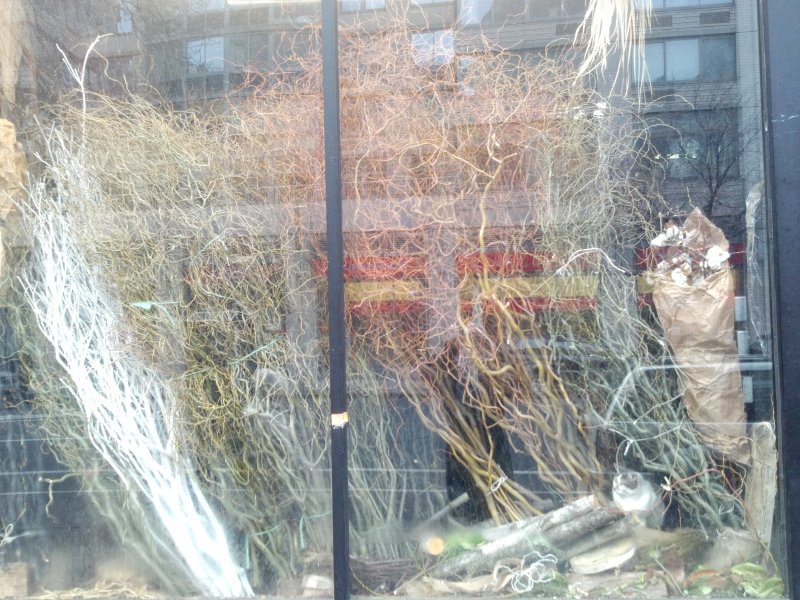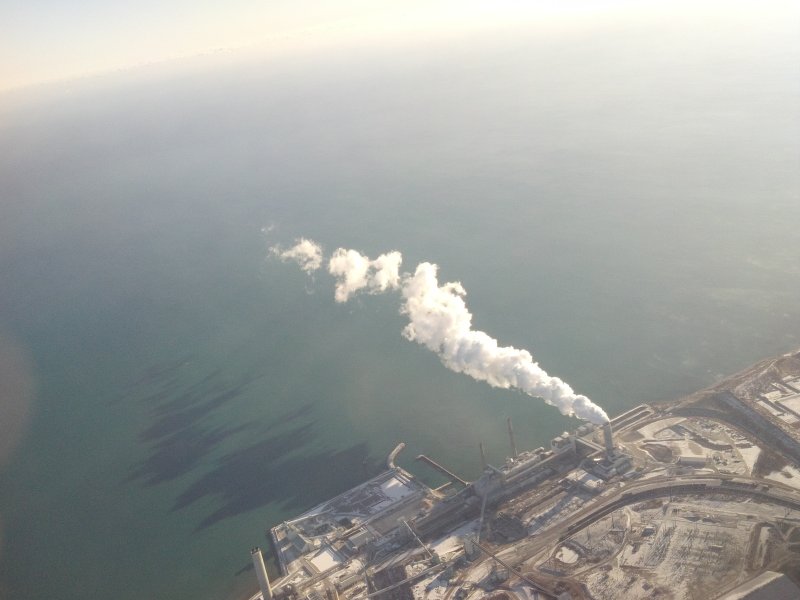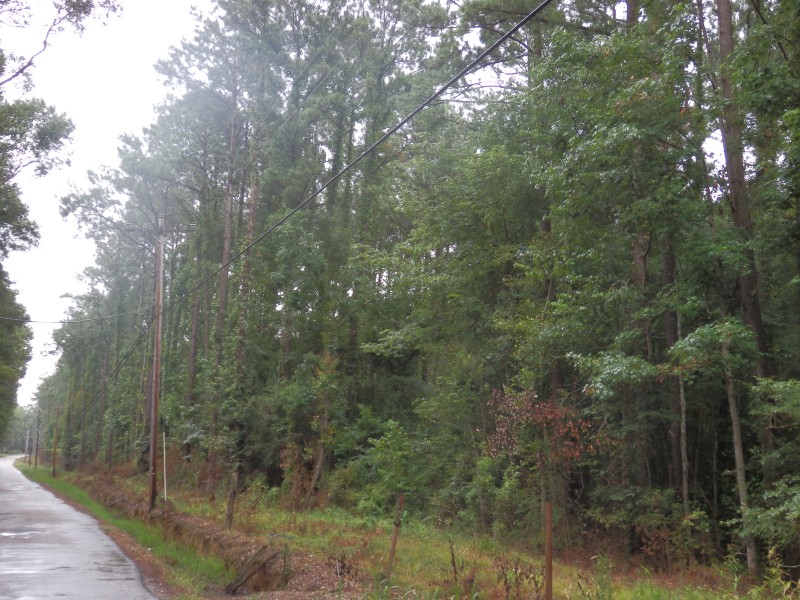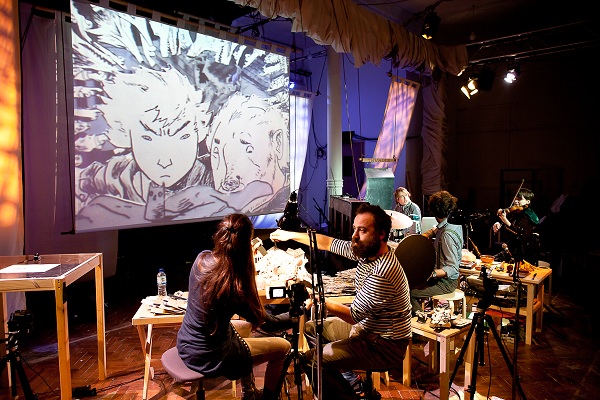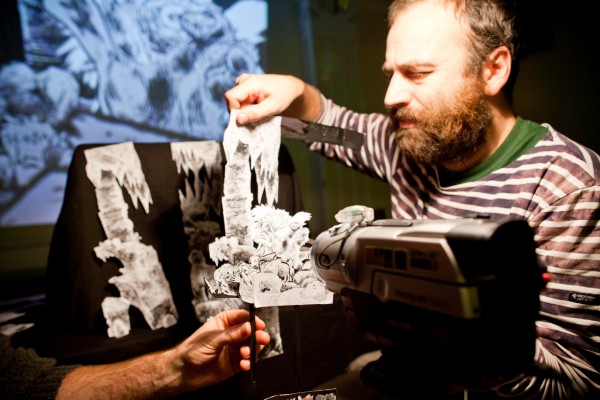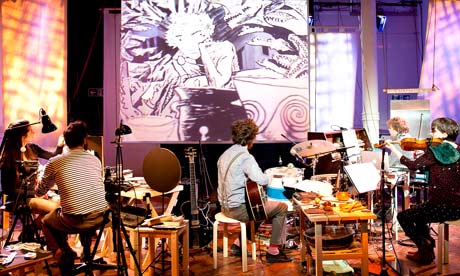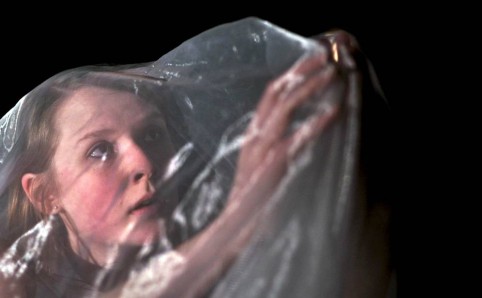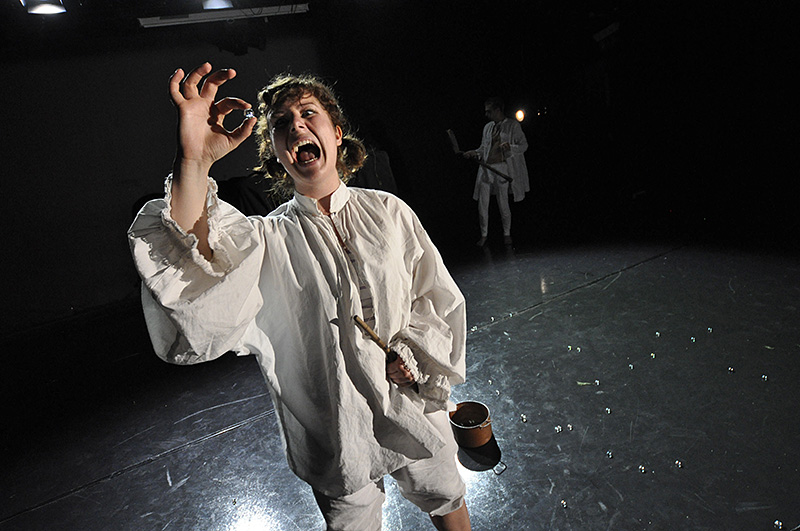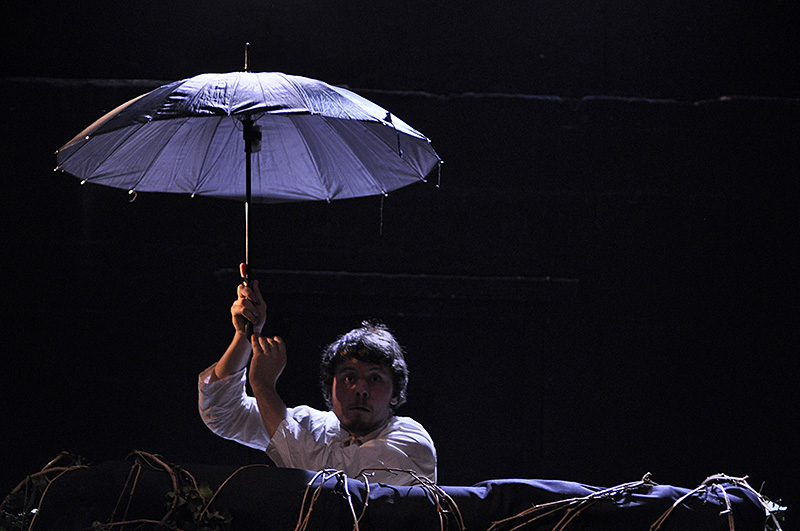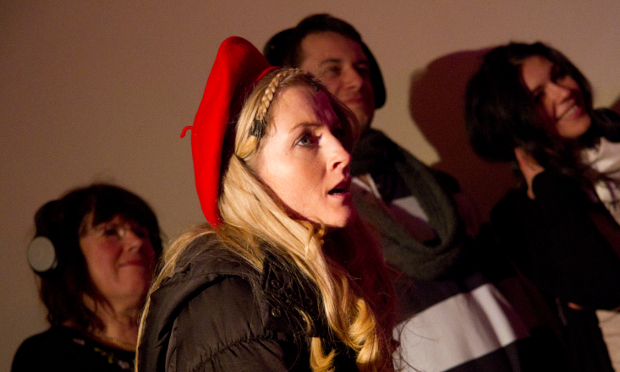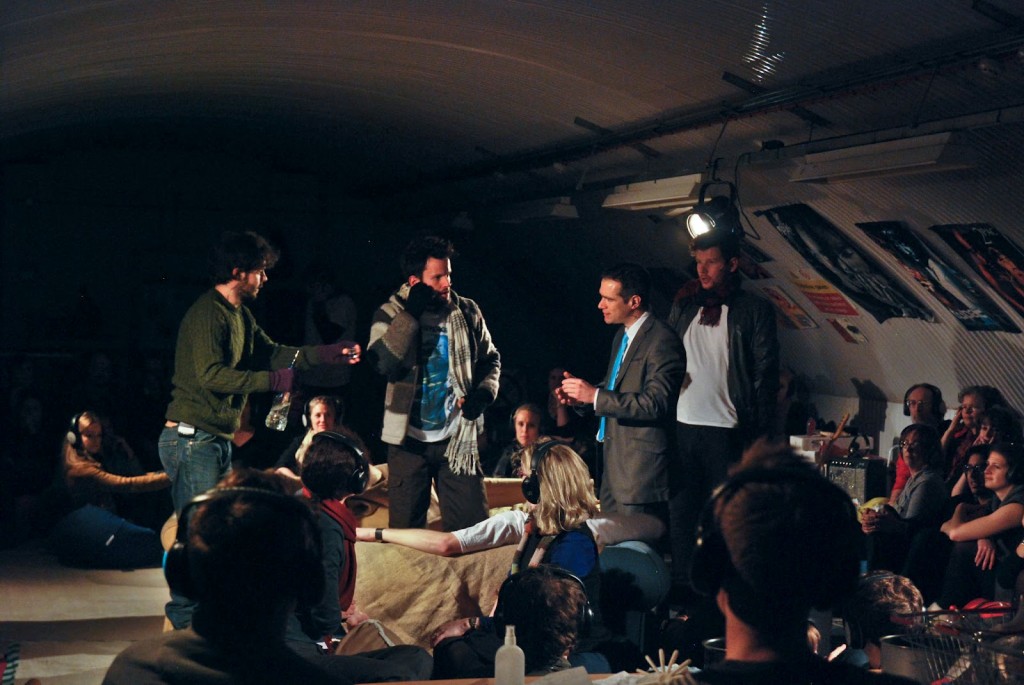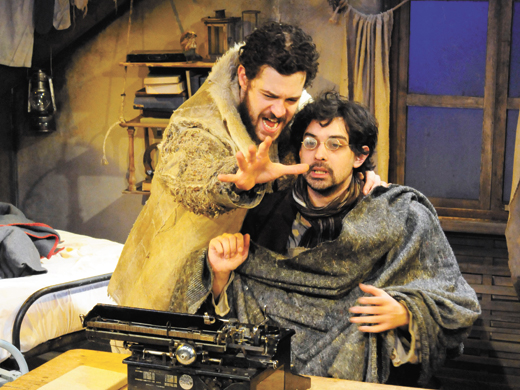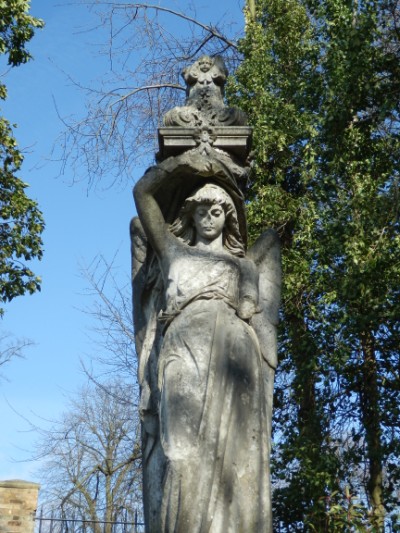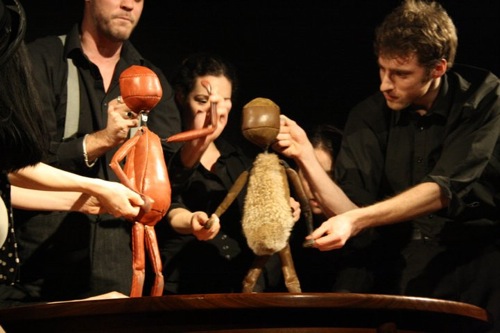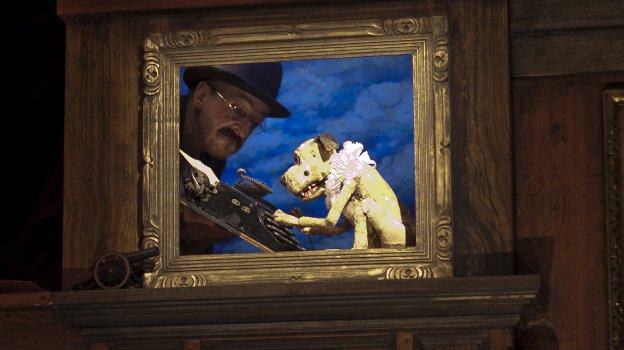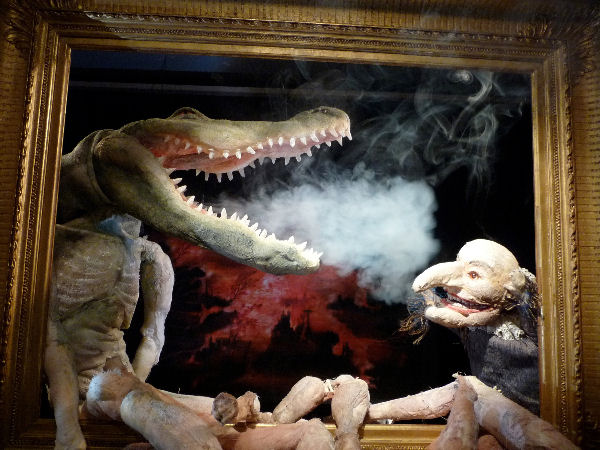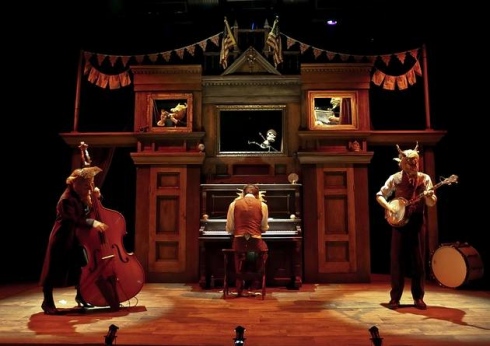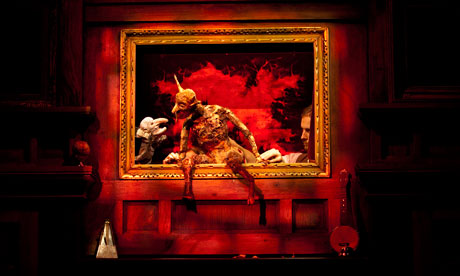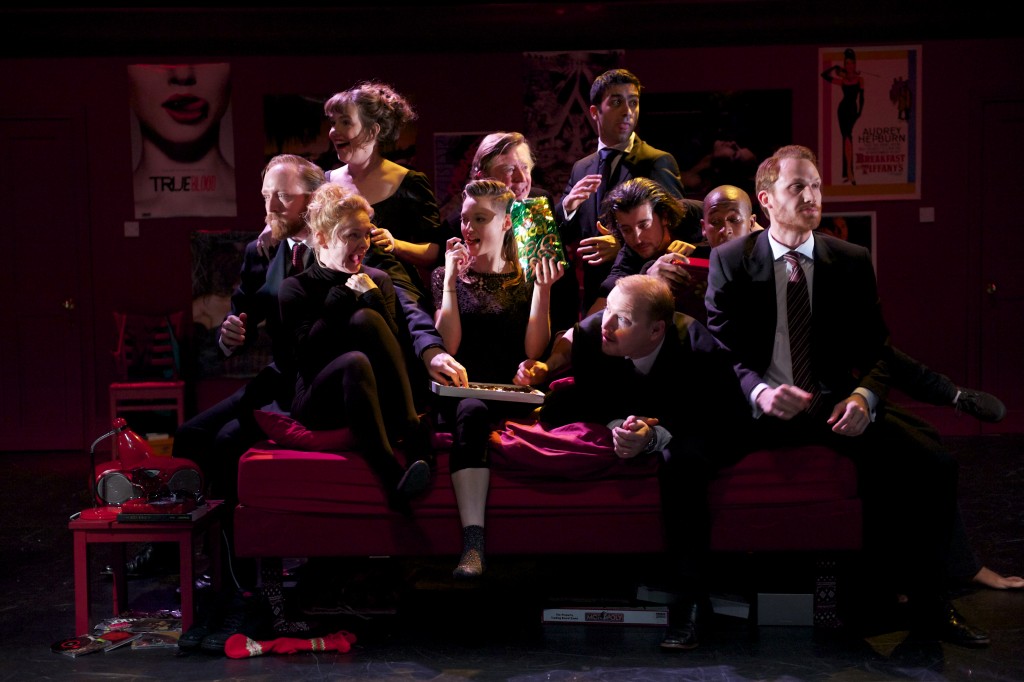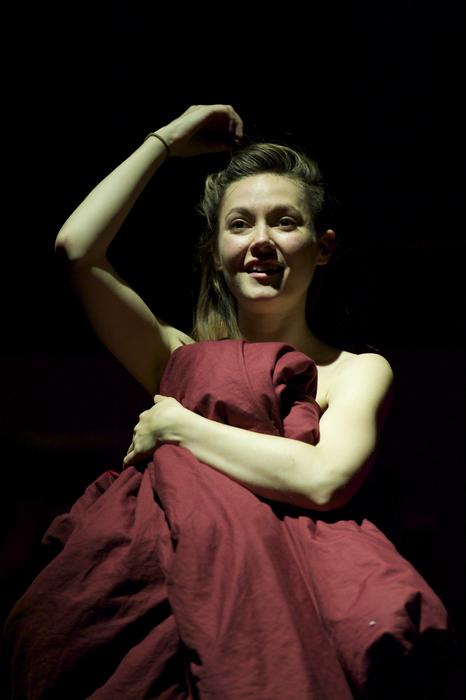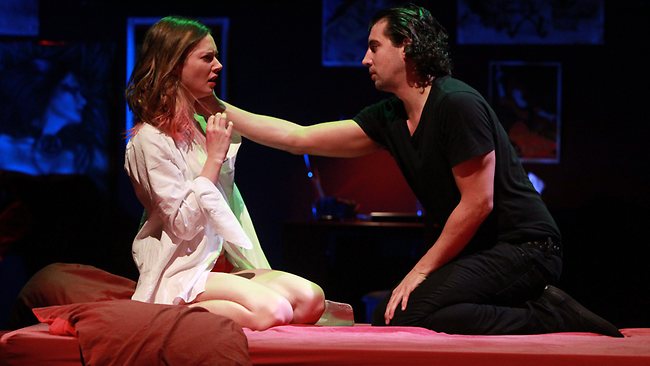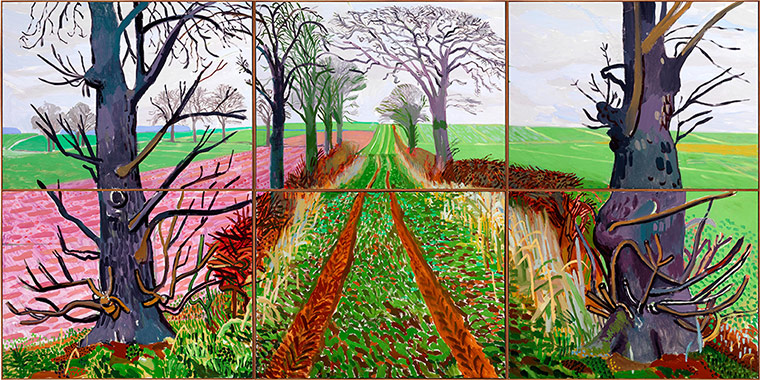Category Archives: Travel
Smokestack Shadows
Piscataway Airs

It even smells different, New York. Those subtle cues you get as you enter the concourse at La Guardia; you know you’re somewhere else. There are so many little things which separate one locale from another, and it is the job of the modern airport designer to eliminate these differences to the extent possible, but New York just smells different.
Not bad, I’m not trying to say it’s a stinky place, or worse for the odors, just that it’s different is all. Like the hand soap or disinfectant concession has been granted someone who simply doesn’t trade anywhere else in the world. We don’t have this scent in Milwaukee; eau de toilette de La Guradia.
From La Guardia to Piscataway is an hour and 30 minutes of close up driving on the BQE, Staten Island Expressway and the 440. The lanes are narrower than those in the Midwest, and the roads rougher (for the most part) so every one is jostling along hoping that that truck next to us won’t jostle this way at the same time that we jostle that way. For the most part we succeed.
Work, work, and then sleep. Restless sleep, and restless awakening. Complimentary breakfast buffet (complimentary to what, one wonders) and then the pensive wait before departure.
Send me a picture of something Baton Rougian
I went on a mission to find something, “Baton Rougian.†Just what that may be escaped me, but I thought the first line of attack might be to find some genuine nature to photograph. Not as easy as it sounds down here.
I asked the client. “Oh I would go Downtown, to the casino, ‘Belle of Baton Rouge.'” she said. “There’s that place there, arbotarium…no arbortari..†“Arboretum?†I offered. “Yes, that’s it. That’s were I go when I want to take some pictures.â€
A little more discussion, and she said “Yeah, I would never go outside.†“Oh, so it’s an indoor arboretum?†“Oh yes, it’s just too hot to be outdoors!â€
Okay, scratch that. I’m not going to a casino to take pictures of trees under glass, and try to pass that off as Baton Rougian!
My first destination, given that all I have so far seen is highways and hotel, was the Waddill Wildlife Refuge. Wrong! Closed Sunday and Monday, so that’s out.
Next up? “BREC Frenchtown Road Conservation Area†a few miles further east. Oops! Strike two! There is a rather permanent looking sign explaining that Louisiana is closed (as far as I can tell) until further notice. You can call or visit some offices, during very proscribed hours, to request permission to visit.
Oh well. At least along the way, I found much to admire about nature in Louisiana. It is certainly hardy. Despite all the indignities mankind seems to hurl at it, it just keeps slogging along. There is an air about things here, everything seems so… verdantly disheveled.
There were plenty of interesting views along the way, but given the prevalence of signs proclaiming, “Posted!†“No Trespassing!†“No Parking!†I decided discretion is the better part of valor after all. More so than in any of my foreign travels, I feel I cannot say for sure that the locals and myself share a common idea of civil behavior and other such norms. I do not mean to impugn the Baton Rougians, but I am not really in Baton Rouge, after all, but actually out of the corporate limits, in the backwoods (in a sense) and this is their turf, after all, so I just slink off.
Now, back at the hotel, after an hour or so of searching for nature, outdoors, that’s open… I gave up. I bought a screw-top bottle of Pinot Grigio (no corkscrew) and settled down to rest and catch up on news, etc.
And Now For Something Completely Different
A Note To Our Readers:
It has come to our attention that some of you think we’re being too “safe†in our entertainment choices. “Pawn: Please, think outside the box. Get off the straight and narrow, the safe choices, and try to sample some of the outré offerings Modern London provides.†reads a typical note.
Okay, your wish is our command. Prepare yourself for the next few reviews of events from Saturday, 25 and Sunday, 26, to see what London really holds in store for the adventurous.
The Paper Cinema, Odyssey
Paper Cinema is a hard concept to express briefly, but let’s give it a try: Paper Cinema are an artist collective who produce original, live, animated performances with live musical accompaniment, utilising paper cuts with inking, shot via video cameras before black backgrounds, digitally composited and projected onto a screen.
For this project, begun almost a year ago, there were two hand animators, three musicians, light and sound technicians. There were a few dozen musical instruments – piano, drums, violin, saw, Makita cordless electric drill, thunder plate – and a few hundred pieces of cut paper, card, etc. Through these tools, with no spoken word at all, they told the classic Homeric tale of Odyssey and did so with such originality, wit, love and passion that we hung on every graceful, carefully choreographed move.
The show began with a lead animator stepping up to a light table and, putting pen to well and then to paper, drawing for us a guide to the major players in the drama. After this introduction, the real animation began. One cannot do it justice with a verbal description, so please take a look at their website: http://thepapercinema.com/
We saw a Saturday matinee, with several children as young as 4 in attendance, and the show held their attention for the entire 85 minutes. We thought this was an exceptional show, and would love to find a way to introduce this art to our own, local audiences.
Panta Rei Theatre Collective: Rocinante! Rocinante!
Not edgy enough yet? Okay, bus down to Rye Park Lane and the CLF Art Cafe @Bussey Building where Panta Rei want us to climb inside the minds of some seriously sick folk. Sick in the head, that is, like Don Quixote sick, like Hamlet sick, like wandering OCD scrubbing their hands without end sick. What do they do? The conceive a site-specific work, a promenade piece in which we, the audience, wander mostly un-directed through the performance space, while blinds, sheers or scrims are occasionally drawn to partition off a space.
What is the action, it is Don Quixote, with Rocinante, his loyal horse, Sancho Panza, his trusty squire and donkey; but no, it is Gary and Lolly, the gravediggers from Hamlet, given more character here than Shakespeare ever did, but different, also. They are discussing whether or not Dolcinea (rather than Ophelia) deserves a Christian burial, a matter of grave concern to Angustias, the cemetery keeper, who is ever and always rinsing raiment properly to wash the dead.
Don Quixote is cracking up, as he rants in Spanish (sometimes with translation, via Sancho, sometimes not) we are treated to the lushness of his dreams, when they are not overrun by the waking dreams of the other characters. Gary, played by the exceedingly petite Ciara D’Anna in a standout performance of mind over dialect, is madly devoted to Lolly (Anna Zehenbauer), but Lolly wants to die, convinced that her life will be more complete once dead. Gary prevails to convince Lolly, via a burial ceremony (books as soil, what does that tell us) that she has now been buried and passed, and this brings at last some measure of tranquillity to their relationship.
Meanwhile Quixote drifts into a feverish dream wherein Dulcinea, in form of a beautiful, diaphanous jelly fish, appears to him, but always between the two are seven dark, evil jelly fish, blocking their reunion.
That is just a sample of the effect with which Panta Rei has brought off their goal: “Interdisciplinary collaborations beyond the realm of performing arts to explore on a deep level issues and topics that are relevant…â€
How successful was this effort? Very, for the most part. Aside from Gary, other stand-out performances belong to Daniel Rejano as Sancho and Almudena Segura as Angustias. The staging is plagued with difficult compromises, mostly due to the exigencies of getting actors and audience in and out of the same spaces at the same time. Little accommodation is made to audience comfort, and this maybe should have been made more clear to ticket purchasers. In the second scene, were are seated on two rows of hay bales, set along the long side of a narrow rectangular space; unfortunately, the action is placed alternatively on one end or the other of this space, rendering those in the front row with stiff necks and good views only of their seat-mate’s scalps.
In reality, tho, these are minor beefs. This was a very ambitious undertaking, and we were moved. The beauty of the Dulcinea dream, with draped umbrellas sculpted into sea creatures was alone worth the price of admission.
Silent Opera: La Bohème
Still with us? Okay, after a day at Royal Botanical Gardens at Kew, we trundled back down to the Old Vic Tunnels this evening for Silent Opera production of Puccini’s La Bohème. We first visited the Tunnels last weekend for Eugene O’Neill’s The Sea Plays, which were staged in “The Screening Room†in the upper levels of the Tunnels’ space. For Silent Opera’s piece, we have to thank a couple of developments of the modern age: Digital archival and frequency hopping, spread spectrum radio.
The former has freed up these spaces, specifically “Archway 236~9, Network Rail, Archival and Storageâ€, which was no longer required by Network Rail and may now be given over to the drug pushers, anorexic models, tarted up showgirls and waifish writers who make up the dramatis personae of the opera.
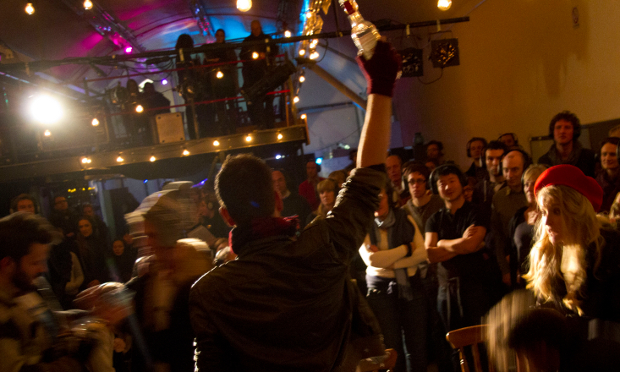
The latter? Well, Silent Opera is a “peculiar and eccentric idea to come up with…†writes director Daisy Evans in her notes. “I looked at the world around me, and to the modern day fascination with the iPod. Teams of people plug into a world and walk around with a personal soundcloud. Apply this to opera, and you have a personal filmic sound world that enables you complete freedom within the world of the opera.â€
We, the audience, are given high-end wireless headphones, pre-tuned to the proper channel to bring us the original orchestral arrangement produced for this project. The performers wear both wireless microphones and earpieces, allowing both for them to hear the music and for the sound crew to mix their voices in for our listening. The effect is profound.
We are ushered up to Rudolfo and Marcello’s loft space, strewn with the detritus of bachelor living, but more – this is all specifically made for the production, notebooks are filled with Marcello’s sketches, magazines feature his love, Musetta, computer monitors are filled with Rudolpho’s website designs. Soon enough the performers crash into the space, and the game is afoot. The music wells in our ears and the singers engage. They engage! They are amidst us and are engaged with us. This continues throughout the entire performance, and I won’t belabour all of the details, but the point is this: Here is opera, on a professional level, in a compelling performance, right in the middle of us, and that is different and new.
How successful? Very.
Listen, every one of these shows is sold out, solid! What’s more, they’re all filled with a magical thing; Young People! This is what theatre, opera, arts need; Young People! Habits built in your 20s and 30s, attending live shows, will carry throughout lifetime, and this bodes very well indeed for London and for all of us.
Accent Versus Acting
We’ve seen two shows in the past two nights featuring British actors wearing Russian accents. Sometimes successfully, sometimes not. Given the choice, Pawn prefers great acting over great accents. When you’ve got both, well that’s a winner. When you’ve got neither… meh.
Thursday night, Giant Olive Theatre at the Lion and Unicorn Freehouse in Kentish Town, presented John Thompson’s A Russian Play, hailed as best new play and best set design by the Off-Westend association awards. Self-described as “Withnail and I meets Crime and Punishmentâ€, we were easily hooked. What they delivered, however, came up a little short.
The theater itself is of interest. Up on the top floor of this old pub, there’s about 50 seats (half filled for our visit) and no real stage, wings, etc. The set, a pre-revolution Petrograd bedsit designed by Olivia Du Monceau, is a work of art, and eminently functional for this show. There were anachronistic elements, but on a budget one can forgive this.
The action, set in 1916, centres around two men, friends since grammar school, Fyodor and Alexsie. Each has come to Petrograd for a different reason: Fyodor, the starving artist, hopes to write the great Russian novel, if he can only get past the first line, “A man enters a darkened room…â€; Alexsie, the revolutionary, loud and boisterous, wants a leading role in the uprising, or at least wants drink like one. They occupy the attic bedsit as two men sharing a cell. There is no money, no food and no fuel. Books are burnt on the sly, by one, and cheese is eaten on the sly by the other. Furniture is sacrificed to the stove.
The dialogue is almost uniformly good, the interactions quite believable, to a point. We felt the direction, by David Salter, sought laughs too cheaply, and sometimes at the expense of otherwise strong scenes. There were other unbelievable moments, such as when a freshly rolled cigarette is discarded by a supposedly impoverished man, or hard-won tea leaves are thrown aside. The dialect work was strong, and it’s no great stretch to believe that these are Russians, just hard sometimes to believe they’re poor.
The performances by Tom Kanji as Fyodor and Dan Percival as Alexsei, are strong, for the most part, but one feels their natural timing may be frustrated by direction. Percival, in the final scene, a tense dramatic moment, seems to teeter uncomfortably between anguish and giggles, but that may have just been us.
Good effort, but not A work. Sorry! Next up is an unexpected joy.
Friday morning we agonized over theatre listings as we had nothing booked yet for the evening. Every time we found a promising show, it was sold out. Finally we just about gave up, when I thought to check Pleasance Theatre up on Caledonia Road. We booked a couple of tickets for Boris and Sergey’s Puppet Cabaret. Then we hopped the tube up to Archway and wandered aimless through Waterlow Park and Highgate Cemetery.
After cemetery we got a bite in a pub nearby, then wandered down through Highgate and hopped on the 390 to King’s Cross. There we took in the “New Wave Photography†show at St. Pancras Crypt (nothing too special — former Eastern Bloc artists discover PhotoShop excess) and then to the Wellcome Collection for Felicity Powell’s fabulous Charmed Life which combines new original work of hers with a wide range of amulets she curated from the collection. Quite good. Also saw Mexican Miracle Paintings which is not so much my taste, but was still quite interesting.
After a day traipsing round Highgate and Islington, King’s Cross and St. Pans, we shot back up to Caledonia Road and Pleasance for the Puppet Cabaret. Oh my, what a shock and treat that was!! Clearly one of the least known, yet best entertainments in London right now. Just as in 2009 I felt that the Crypt show, Tales of the Electric Forest was the best exhibit up at the time, so I feel that Boris and Sergey is the cream of the crop right now. This was a Master Class in puppetry in disguise. What starts out as a bawdy exercise in audience participation (Puppet Poker Pit) morphs into a broad ranging take on culture, including puppet takes on Kate Bush’s Wuthering Heights and David Lynch’s The Elephant Man. Faust has his share of the game, too. I cannot even begin to describe it all, and I shouldn’t, but I was beside myself with glee at the wonderful performances.
This is a production of Flabbergast Theatre, and here is their mission statement:
Flabbergast was set up to make uncompromising and exciting physical theatre drawing on the Bunraku style of puppetry and a belief that all Theatre should be engaging and sweaty.
It asks the ultimate commitment mentally vocally and physically from its actors in order to achieve an intensity of performance which is all too often lacking in theatre of the day. It believes that its actors are its single greatest resource and as such endeavours to create theatre through an extensive and collaborative research and development process.
The company hopes to develop existing texts and new devised pieces bringing an innovative and unpretentious approach to its work.
The Bunraku puppets were so simple and yet their movements so true, the artists so dedicated and their ensemble so integrated. OMG!! Still now, the next day, I am still amazed at just how powerful the effect was. Please take a look at their website:
http://www.wix.com/metalchimp/flabbergast
If you’re in London, GO SEE THIS SHOW!
As to Accents and Acting? Well, there is little pretence that Boris and Sergey are really Russian, but you simply don’t care as the intensity of the puppeteers’ performance sweeps you into their world, and you utterly accept their conceit. Given good enough acting – and here it was sublime – an audience can be taken anywhere, and Flabbergast has proved that to us.
In the final scene of this show, a moment of intense drama, each of the six puppeteers are working simple hand puppets (not the Bunraku puppets used throughout the show) and they walk right up to the audience, arms outstretched before them. Their faces, both puppet and puppeteer, are 100% engaged in character and we are 100% engaged in story. This is magic, this is what theatre is for. This was sold as, “Simply the greatest vaudevillian double act ever conceived for the small stageâ€, but what we got instead was a lesson in what theatre is all about.
Backfill – London 2012
Playing catch-up here on several of our art outings from this past week. New posts relating to past events will be backfilled with their posting date matching the event date. So, if you’ve been keeping up, we haven’t, and you may find new stories below.
The Devil and Mister Punch
My first taste of performance came as a small child. Growing up, we kids had our own theatre, the Amber Playhouse, a lovely little puppet theatre which my parents had made and outfitted with the usual cast of Punch characters; Mister Punch and Mrs Judy, the Baby, Constable, Alligator and Devil. With these puppets we performed not only various bastardisations of the Mister Punch oeuvre, but also works of our own making, and those based on fairy tales for which we had made or acquired additional puppets.
Samuel Pepys was the first to write down, to log, a reaction to Punch. Writing in his diary in May of 1622, of a visit with Mr Salisbury to Covent Garden, “Thence to see an Italian puppet play that is within the rayles there, which is very pretty, the best that ever I saw, and great resort of gallants.†This was an Italian marionette company performing Pulcinella (or variously, Punchinello), a piece of commedia dell’arte. This being the 350th anniversary for Punch, then, Julian Crouch and Improbable Theatre have decided to bring him back, albeit with a twist.
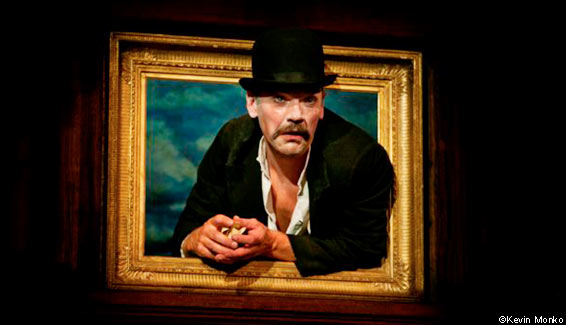
A puppet show in The Pit at Barbican is one of the hottest tickets in London right now, a sold-out run, and we think that’s just fine. Having failed to book in advance, we waited just a while on the returns queue before ending up with 6th row centre seats, right behind writer and performer Nick Haverson’s dad, whom we met in lobby over cocktails prior to curtain. “When I got out of school,†said Mr. Haverson, “I didn’t know what I wanted to do, but I got a job and made a life. For our kids, we had two boys, we didn’t want to tell them what to do, but we made sure they got into good schools.†He was proud of his son’s work in theatre, even if the shows are sometimes unfamiliar to him. He certainly could be proud of the show we saw with him last night!
The script for this performance, by a Messr’s Harvey and Hovey, we are told (or shown) was written by a dog at a typewriter. The dog himself claims no authorship, chalking it up as a publicity stunt in subsequent court testimony, but it does have a ring of truth to it, if you ask me. A half dozen piglets add comic relief, before thoroughly getting into the sausage making, as it were. A rag-tag band of musicians on bass, piano, metronome, bells and more serenade us, and the puppets… where to begin.
This is some of the most lovingly done, most graceful puppetry one may ever see. A scene in which Punch negotiates with Mephistopheles has the large puppet of the devil worked by three people, but with such grace and such slow, precise movement that the performers disappear. A hand puppet one moment is life-sized the next, shocking the audience.
The design and production crew all deserve kudos here. Julian Crouch and Jessica Scott’s puppets are exquisite. Marcus Doshi’s lighting design is at once effortless and exact, leading us around the complex set and focusing our attention just where it needs to be. That set, designed by Crouch, along with Rob Thirtle and Mike Kerns, and constructed by Heywood Productions, is a true piece of art. There are panels everywhere through which the puppets appear. The whole piece is a shrine.
The final performance of The Devil and Mister Punch will be Saturday, 25 February. Keep an eye out, however, there are rumours of a tour.
Tis Pity
While Pawn finds himself most at home with New Work, there is plenty to be admired in a well executed revival or classic. Monday night brings your intrepid travellers to the latter, John Ford’s “Jacobethan†Tis Pity She’s A Whore, revived and restaged by Cheek By Jowl at Barbican’s Silk Street Theater. Ford was a contemporary to Shakespeare, writing in a similar style, albeit seldom in iambic pentameter.
We were most impressed by Cheek By Jowl’s 2009 production of Jean Racine’s Andromaque and so were expecting similar quality. We were not let down. The large cast performed in brilliant ensemble form…
If I may take a moment aside, that is a recurring theme of the best of the shows we’ve taken in, of late – fine ensemble work. This is great to see, and must be encouraged.
The scene opens with Annabella, marvellously played by Lydia Wilson, as a teenage emo girl, walls bedroom covered with Vampire Diaries posters and the like, dancing wildly on her bed, whilst surrounded by her suitors. Her father, Florio, David Collings, is eager to marry her off, and is pushing her to choose.
Her brother Giovanni, Jack Gordon, has other plans. He courts his sister, wins her and after a night of passion, virtually abandons her, telling her to choose her husband wisely and always keep this their secret. Bereft, Annabella first tries to simply avoid marriage, but when her father insists, she chooses the nobleman Soranzo, played ably by Jack Hawkins.
There is much drama: teenage pregnancy, unrequited love, jilted cougar (Hippolita) and such. Much sturm und drang. As in any good tragedy, by the time its over pretty much everyone is dead.
The single set, designed by Nick Ormerond, which serves this all is Annabella’s teenager’s bedroom; all action comes and goes through this single, simple setting, and is brilliantly managed by Declan Donnellan’s brisk direction. The show is taughtly choreographed and compellingly staged. Wilson’s performance, especially, stands out for its unending, boundless energy.
Not usually one for morality plays, Pawn seems to be finding himself in more and more of them lately. Tonight, as much fun as the immorality was, the morality was much bloodier, and in the end, that was just what the playwright ordered.
A Bigger Crowd
We stood on queue for well over an hour at the Royal Academy for David Hockney: A Bigger Picture. The show itself we saw in considerably less time. There was much to appreciate in this exhibition of Hockney’s scenes of nature, mostly from the recent past, but on a whole I believe it was oversold. The crowds were so large it was hard to manoeuvre the galleries, and, not trusting us gawkers to behave ourselves, rope barriers kept one from moving freely between otherwise connected galleries – forcing us to follow the curator’s chosen path. Boo on that! Allow me to escape an over-crowded gallery and return to it later!
One entire gallery was filled with The Arrival Of Spring, 51 prints and one large painting recording the transition from winter to spring in Woldgate, East Yorkshire, in 2011. Each day, roughly, Hockney would venture to this or that favourite vantage point in the woods and paint the scene on his iPad with a stylus. These were later printed and painted upon, following specific notes he had made about how to properly scale them up. The effect was profound. The large prints, each about 5 feet tall, were stacked two tall, and ringed three walls of the capacious gallery. The fourth wall was covered with a 32 canvas painting depicting one scene.
In my mind, the most effective works, other than the lovely charcoal studies which seemed to be shown more for elucidation than admiration, were those in the ultimate, Recent Work gallery. This feature large iPad prints from Hockney’s 2012 visit to Yosemite Valley. These pieces are printed out in immense form, easily 10 or 12 feet tall, where Hockney’s sure and perfect capture of the majesty of these natural wonders is best able to play upon the user.
For an interesting take on the exhibit, check out Elinor Olisa’s blog post about it.

